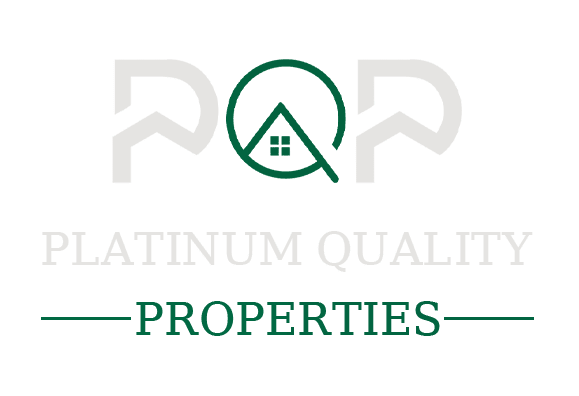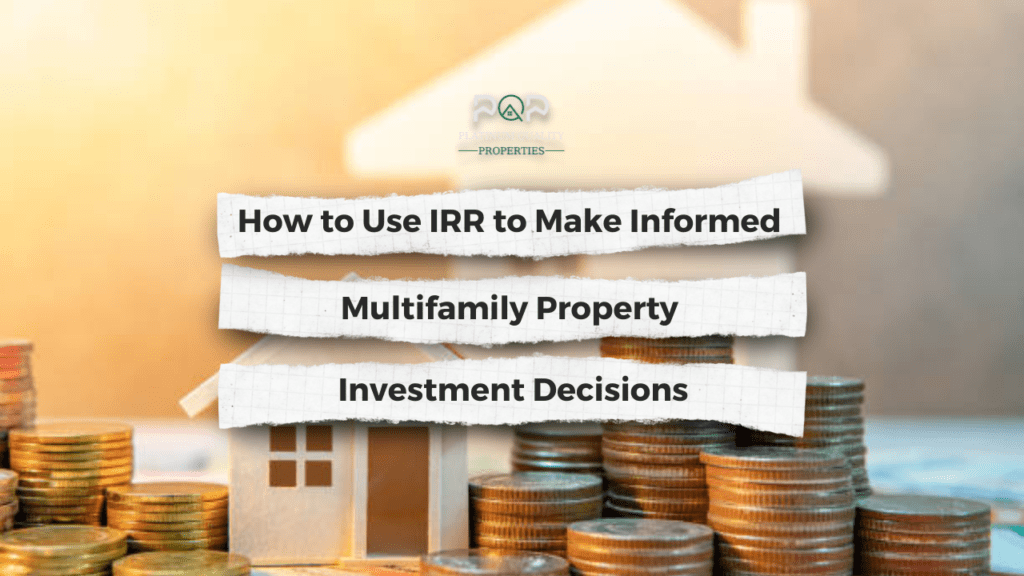When it comes to analyzing multifamily property investment opportunities, there are many financial metrics that investors use to determine the potential profitability of a property. One of the most important of these metrics is the internal rate of return (IRR). In this blog, we’ll take a deep dive into what IRR is, why it’s important, and how to calculate it for multifamily property investment.
What is IRR?
IRR is a financial metric that calculates the expected rate of return on an investment over a specified period of time. It takes into account the initial investment, as well as any cash inflows and outflows that occur during the investment period. The IRR is expressed as a percentage, and it represents the rate at which the investment’s net present value (NPV) is equal to zero.
Why is IRR important for multifamily property investment?
The IRR is an important metric for multifamily property investment because it allows investors to compare the potential profitability of different investment opportunities. In addition, it provides a more accurate picture of the investment’s performance over time than other metrics, such as simple return on investment (ROI), which only takes into account the initial investment and the final value of the investment.
How to calculate IRR for a multifamily property investment?
Calculating IRR for a multifamily property investment involves several steps. Here’s a breakdown of the process:
Step 1: Determine the expected cash flows
Identify the expected cash inflows and outflows of the investment over its entire holding period. This typically includes rental income, property management fees, maintenance costs, and other expenses. The cash flows should be projected for each year of the holding period.
Step 2: Calculate the present value of the cash flows
Calculate the present value of each cash flow by discounting it back to its present value using the appropriate discount rate. The discount rate should reflect the investor’s required rate of return or cost of capital. The present value of each cash flow is calculated using the following formula:
PV = CFt / (1 + r)t
Where:
PV = present value
CFt = cash flow in year t
r = discount rate
t = year of the investment period
Step 3: Calculate the net present value
Calculate the net present value (NPV) of the investment by subtracting the total present value of the cash outflows from the total present value of the cash inflows. The NPV is calculated using the following formula:
NPV = ∑PV(inflows) – ∑PV(outflows)
Where:
PV(inflows) = present value of cash inflows
PV(outflows) = present value of cash outflows
Step 4: Solve for IRR
Solve for the internal rate of return (IRR) by finding the discount rate that makes the net present value (NPV) equal to zero. This can be done using trial and error, or by using a financial calculator or software program. To solve for IRR using trial and error, you can try different discount rates until the NPV equals zero. To solve for IRR using a financial calculator or software program, enter the expected cash flows and discount rate, and the calculator will compute the IRR.
Once you have calculated the IRR, you can use it to evaluate the potential profitability of the multifamily property investment. If the IRR is higher than the investor’s required rate of return, the investment may be considered profitable. If the IRR is lower than the required rate of return, the investment may not be profitable.
Key Takeaways
IRR is an important metric for multifamily property investment because it allows investors to compare the potential profitability of different investment opportunities.
Calculating IRR involves determining the expected cash flows, calculating the present value of the cash flows, calculating the net present value, and solving for IRR.
Investors should use IRR in conjunction with other financial metrics, such as ROI and cash-on-cash return, to get a more complete picture of the potential profitability of an investment opportunity.
Here are some tips for using IRR effectively in multifamily property investment:
Consider the investment period – The IRR is calculated based on the expected cash flows over a specified period of time. It’s important to consider how long you plan to hold the investment, as this can affect the IRR calculation. For example, a shorter investment period may result in a higher IRR, but may not be as profitable in the long run.
Use a realistic discount rate – The discount rate used to calculate the present value of the cash flows should be based on your required rate of return or cost of capital. Using an unrealistic discount rate can lead to inaccurate IRR calculations.
Use IRR in conjunction with other metrics – While IRR is an important metric, it shouldn’t be the only one you consider when evaluating a multifamily property investment. It’s important to also look at other metrics, such as cash-on-cash return and ROI, to get a more complete picture of the investment’s potential profitability.
Account for potential risks and uncertainties – When calculating the expected cash flows for an investment, it’s important to account for potential risks and uncertainties that could affect the investment’s performance. This may include factors such as changes in the rental market or unexpected maintenance costs.
Consider value-add opportunities – Value-add opportunities can significantly impact the IRR of a multifamily property investment. For example, if you plan to make improvements to the property that will increase rental income, this can result in a higher IRR.
IRR is an important metric for multifamily property investment because it allows investors to compare the potential profitability of different investment opportunities. When using IRR to evaluate a multifamily property investment, it’s important to consider the investment period, use a realistic discount rate, use IRR in conjunction with other metrics, account for potential risks and uncertainties, and consider value-add opportunities. By doing so, investors can make informed investment decisions and maximize their potential returns.
Keywords to Understand
- Multifamily property investment: Investment in a residential property that contains more than one living unit.
- Internal rate of return (IRR): A financial metric that calculates the expected rate of return on an investment over a specified period of time.
- Financial metrics: Metrics used to evaluate the financial performance of an investment, such as IRR, ROI, and cash-on-cash return.
- Net present value (NPV): The present value of an investment’s expected cash flows, calculated by discounting each cash flow back to its present value.
- Discount rate: The rate used to discount each cash flow back to its present value, typically the investor’s required rate of return or cost of capital.
- Cash inflows and outflows: The expected cash inflows (such as rental income) and outflows (such as property management fees and maintenance costs) associated with an investment.
- Rental income: The income generated by renting out a property to tenants.
- Property management fees: Fees paid to a property management company to oversee the day-to-day operations of a rental property.
- Maintenance costs: The costs associated with maintaining and repairing a rental property.
- Required rate of return: The minimum rate of return an investor requires to make an investment.
- Cost of capital: The cost of financing an investment, including the cost of debt and equity.
- Investment period: The period of time over which an investor expects to hold an investment.
- Trial and error: A method of finding the IRR by repeatedly testing different discount rates until the NPV is equal to zero.
- Financial calculator: A tool used to perform complex financial calculations, such as calculating IRR.
- Software program: A computer program used to perform financial calculations and analysis.
- Cash-on-cash return: A financial metric that measures the annual return on investment relative to the amount of cash invested.
- Return on investment (ROI): A financial metric that measures the return on investment relative to the initial investment.
- Value-add opportunities: Opportunities to increase the value of a property, such as making improvements that will increase rental income.
- Rental market: The market for rental properties in a particular geographic area.
- Unexpected costs: Costs associated with unforeseen events, such as unexpected maintenance or repairs.
- Potential risks: Risks associated with an investment, such as changes in the rental market or unexpected costs.
- Potential profitability: The potential for an investment to generate a profit.
- Investment performance: The financial performance of an investment, measured by metrics such as IRR and ROI.
- Real estate investing: Investing in real estate, including residential and commercial properties.
- Investment strategies: Approaches to investing, such as value investing or growth investing.

